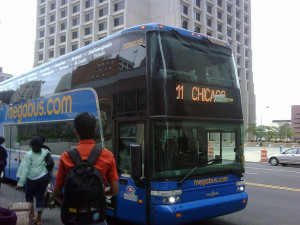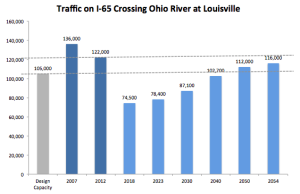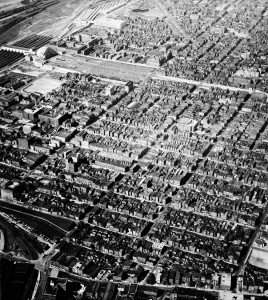"We believed then as we do now, that the sharing economy can democratize access to goods, services, and capital — in fact all the essentials that make for vibrant markets, commons, and neighborhoods. It’s an epoch shaping opportunity for sustainable urban development that can complement the legacy economy. Resource sharing, peer production, and the free market can empower people to self-provision locally much of what they need to thrive. Yet we’ve learned that current U.S. policies often block resource sharing and peer production. - From the … [Read more...]
The Tough Realities Facing Smaller Post-Industrial Cities
A couple weeks ago the Economist ran a leader and an article on the plight of smaller post-industrial cities, noting that these days the worst urban decay is found not in big cities but in small ones. They observe: Partly, this reflects the extraordinary success of London and continuing deindustrialisation in the north of England. Areas such as Teesside have been struggling, on and off, since the first world war. But whereas over the past two decades England’s big cities have developed strong service-sector economies, its smaller industrial … [Read more...]
Highways, Casinos, and Bridges, Or the Insatiable Demand for Boondoggle Highways
A friend of mine recently summed up the mindset of all too many when it comes to economic development: This bunch loves casinos and highways and bridges and hates mass transit. Highways and bridges and casinos are their answer to every problem: Tax base eroding? Build a casino. Urban congestion? Build a highway. Can't get to casinos? Built a bridge. Undeveloped backwoods counties? Build a highway AND a casino AND more bridges. Jobs recovery slow? Build a highway. This is on display yet again in Indiana. Politicians in southwest Indiana spent … [Read more...]
Asking the Wrong Question On Amenities
The Indianapolis Star ran a major article on Sunday that provides a view of the new suburban reality facing many place in America. Called "Amenities reflect Indianapolis suburbs' new goals" it describes the efforts of various suburbs around Indy to move away from purely a schools/rooftops/retail model of the suburb to one that offers other amenities such as first class parks, New Urbanist town centers, arts venues, etc. Incidentally, the five or so featured are all completely run by Republicans, showing again that local level Republicans today … [Read more...]
Megabus – King of the Road
This post originally appeared on August 18, 2011. Source: Flickr/BudahblessIn recent years there's been a resurgence in intercity bus travel, driven by the rise of low cost, non-stop service linking tier one cities like New York, Chicago, and Washington, DC with other regional hubs in their surrounding areas. This is a lively and diverse market, particularly on the east coast, with providers like Megabus, Bolt Bus, Greyhound, and a host of so-called "Chinatown" buses [update: who find themselves on the regulatory run, probably at … [Read more...]
Louisville Bridges Project Proceeds From Tragedy to Farce
I've written a lot about the $2.6 billion boondoggle project to build two new bridges across the Ohio River in Louisville (see here, here, here, here, here, here, and here). A new East End river crossing is without a doubt necessary and adds regional value, but the rest of the project is basically bad news. But no matter how crazy this project is, it always manages to find ways to show that it's even more wacky than I thought. The latest installment comes from the so-called "investment grade toll study" that was conducted in order to set … [Read more...]
The Promise and the Peril of Rust Belt Chic
What do you do when you're a post-industrial city fallen on hard times? There's a sort of default answer in the marketplace that I'll call for want of a better term the "Standard Model." The Standard Model more or less tells cities to try to be more like Portland. That is, focus on things like local food, bicycles, public transit, the arts, New Urbanist type real estate development, upscale shopping, microbreweries, coffee shops, etc., etc. The idea seems to be that the Rust Belt city model is a failure and should be chucked in favor of … [Read more...]
Making the Link Between Quality of Life and Economic Development
A rather prosaic economic development announcement in Indianapolis provides an opportunity to hammer home in a concrete way the connection between quality of life investments and economic development. This is something I've long argued we urbanists do a poor job of. We tend to adopt a "build it and they will come" marketing approach to quality of life initiatives where the connection between cause and effect is tenuous. Additionally, these tend to focus almost entirely on and tell stories about "the best and brightest" which in a country dying … [Read more...]
In Case You’ve Forgotten How Badly Freeways Damaged Our Cities, Cincinnati Edition
A couple weeks ago I posted a series of photos demonstrating the damage freeway construction did to Indianapolis. Since I've been covering Cincinnati this week, I thought I'd show the damage freeways did there too. Over the Rhine is one of America's most stunning historic districts. When I visited the city last year, one of the locals explained that there had been "miles" of neighborhoods just like it obliterated by freeway construction. I found this difficult to credit until I came across the photographic proof. Here's a picture of one … [Read more...]
In Case You’ve Forgotten How Much Damage Freeway Construction Did to Our Cities
Curt Ailes recently pointed me at this post from Historic Indianapolis showing the before, during, and after of freeway construction in the southeast quadrant of Indianapolis. The pictures say it all: Before: During: Today: You may also want to check out my post on the even worse damage done in Cincinnati. … [Read more...]
- « Previous Page
- 1
- …
- 15
- 16
- 17
- 18
- 19
- …
- 32
- Next Page »



